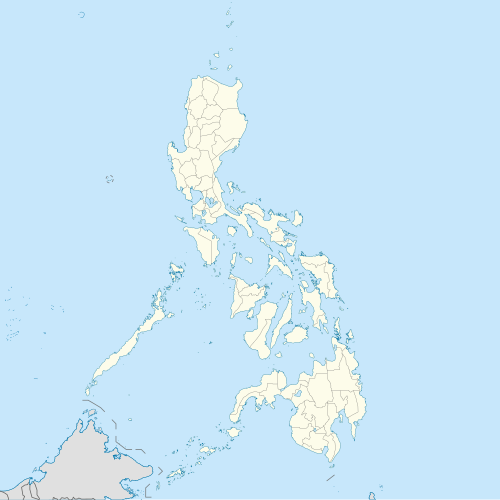| Part of a series on the |
| Pre-colonial history of the Philippines |
|---|
 |
| See also: History of the Philippines |
| Chola kings and emperors |
|---|
| Interregnum (c. 200 – c. 848 CE) |
| Related |
The polity of Sanmalan is a precolonial Philippine state centered on what is now Zamboanga.[1] Labeled in Chinese annals as "Sanmalan" 三麻蘭 (Hokkien Chinese: 三麻蘭; Pe̍h-ōe-jī: Sam-mâ-lân; Mandarin Chinese: 三麻蘭; pinyin: Sānmálán). The Chinese recorded a year 1011 tribute from its Rajah or King, Chulan, who was represented at the imperial court by his emissary Ali Bakti.[2] Rajah Chulan who may be like their Hindu neighbors, the Rajahnates of Cebu and Butuan, be Hindu kingdoms ruled by Rajahs from India. Sanmalan specifically being ruled by a Tamil from the Chola Dynasty, as Chulan is the local Malay pronunciation of the Chola surname.[3][4] The Chulan ruler of Sanmalan, may be associated with the Cholan conquest of Srivijaya. This theory is corroborated by linguistics and genetics as Zamboanga is, according to anthropologist Alfred Kemp Pallasen the linguistic homeland of the Sama-Bajau people, and genetic studies also show that they have Indian admixture, specifically the tribe of the Sama-Dilaut.[5] The capital, located in modern-day Zamboanga city, may have been Jambangan, which is part of the ancestral land of the indigenous Subanon people, who were the majority in the Zamboanga peninsula at the time.[6][7]
The tribute born by Rajah Chulan to the Chinese Emperor included aromatics, dates, glassware, ivory, peaches, refined sugar, and rose- water, which suggests that Sanmalan had trade links into Western Asia.[1]
The later Chinese historical chronicle Zhufan zhi 諸蕃志 published at 1225; wrote once again about Sanmalan but it was now known as Shahuagong. In contrast to its previous mention as a trade emporium, it became a pirate-state driven by slave raiding.[8]
Many of the people of the country of Shahuagong go out into the open sea on pirate raids. When they take captives, they bind them and sell them to Shepo (Java) (as slaves)
— ~Zhufan zhi 1225
When the Spanish arrived, they gave protectorate status to the ancient semi-independent Rajahnate of Sanmalan which was before them, was previously a protectorate of the Sultanate of Sulu.[9] Under Spanish rule, the location of Sanmalan received Mexican and Peruvian military immigrants.[10] After a rebellion against Spanish rule, the state that replaced Spain and had subsisted on what was once Sanmalan's location, was the short-lived Republic of Zamboanga.
- ^ a b Reading Song-Ming Records on the Pre-colonial History of the Philippines By Kansai University
- ^ Filipinos in China Before 1500 By William Henry Scott (Page 4)
- ^ John N. Miksic (30 September 2013). Singapore and the Silk Road of the Sea, 1300_1800. NUS Press. pp. 147–. ISBN 978-9971-69-574-3.
- ^ Marie-Sybille de Vienne (9 March 2015). Brunei: From the Age of Commerce to the 21st Century. NUS Press. pp. 47–. ISBN 978-9971-69-818-8.
- ^ Larena, Maximilian; Sanchez-Quinto, Federico; Sjödin, Per; McKenna, James; Ebeo, Carlo; Reyes, Rebecca; Casel, Ophelia; Huang, Jin-Yuan; Hagada, Kim Pullupul; Guilay, Dennis; Reyes, Jennelyn (2021-03-30). "Multiple migrations to the Philippines during the last 50,000 years". Proceedings of the National Academy of Sciences. 118 (13): e2026132118. Bibcode:2021PNAS..11826132L. doi:10.1073/pnas.2026132118. ISSN 0027-8424. PMC 8020671. PMID 33753512.
- ^ "Zamboanga (Zamboanga del Sur, Philippines)". Asia and Oceania. 2012. pp. 917–920. doi:10.4324/9780203059173-209. ISBN 978-0-203-05917-3.
- ^ chrome-extension://efaidnbmnnnibpcajpcglclefindmkaj/https://uz.edu.ph/wp-content/uploads/2022/08/UZGSJ-Vol-10.pdf
- ^ A Chinese Gazetteer of Foreign Lands A new translation of Part 1 of the Zhufan zhi 諸蕃志 (1225) By Shao-yun Yang (Department of History, Denison University) October 2, 2022
- ^ Origination and Formation of Sulu Sultanate during the 14th Century Southeast Asia By Michael Vincent P. Caceres
- ^ "Second Book of the Second Part of the Conquests of the Filipinas Islands, and Chronicle of the Religious of Our Father, St. Augustine" (Zamboanga City History) "He (Governor Don Sebastían Hurtado de Corcuera) brought a great reënforcements of soldiers, many of them from Perú, as he made his voyage to Acapulco from that kingdom."
